Genetic Mission Control
Commanding Progress. Backed by Data. Built for the Breed.
At Bowman Superior Genetics, we don’t chase trends– we build the future.
Every sire and donor is backed by data, driven by purpose, and expected to deliver real-world results where it counts: in the pasture, on the rail, and in your bottom line. We’re not here for average. We’re here to lead, to prove, and to push the Shorthorn breed forward with discipline, grit, and measurable progress. Genetic improvement isn’t a side project; it’s the core of what we do, and we do it with intention.
From 1994 to 2004, BSG was fueled by junior projects that filled the show calendar and instilled work ethic into the kids. Luke and Lindsay, proud AJSA members, showed at the county, state, and national levels, earning awards that any family would celebrate. But for Phil and Linda, the deeper value came in the lessons learned, like leadership, accountability, and stockmanship that continue to drive the program today.
Since 2005, the focus has shifted squarely to breed improvement. Phil and Linda doubled down on using the tools available to make measurable progress; tools that any breeder could use, but few choose to. Nearly each season, they collect and submit real data, birth, growth, carcass, etc., because genetic improvement requires more than pedigree estimates. It takes proof. Many of today’s large Shorthorn operations are better marketers than us, merchandizing “paper tigers” sold off of incomplete generational assumptions but don’t bother to gather this kind of information. We do it because we believe the breed deserves better than guesswork.
The BSG cow herd now just under 100 breeding-age females: purebreds, composites, and foundations. Every one of them earns her keep. She must back up her presence with data, whether it’s in Conception (STAY), Calving Ease (CED, CEM), Carcass Merit (MARB), or the economic engine of total profit, $Durham. All heifers are retained post-weaning for 205-day weights and genomic testing. Cull decisions aren’t made on opinion, they’re made after GE-EPDs are in, and backed by performance, structural evaluation, body type, and eye appeal.
Only 10–15% of bull calves make the cut to be merchandized as herd sires. They’re selected not only for performance ratios at birth and weaning, but also for visual quality, including a final appraisal by the family’s reputable show judges and the professional AI sire analyst. The rest are steered and either sold to local freezer beef customers or retained through finishing and harvest. Those retained steers are tested all the way to the rail at the University of Missouri through the IGS Steer Profitability Competition, with data from their performance feeding back into their sire and dam’s EPD profiles, raising accuracy and sharpening future decisions. While there, they’re also evaluated for feed intake and efficiency, one more layer of insight that most operations skip, but we see as essential.
IGS Steer Profitability Competition:
Proving Shorthorn Value Where It Counts
The IGS Steer Profitability Competition (SPC), hosted annually by the American Simmental Association and International Genetic Solutions, is one of the most comprehensive performance evaluations in the beef industry. Conducted at the University of Missouri’s Beef Research & Teaching Farm, this test tracks steers through every phase of post-weaning development, measuring feed intake, rate of gain, carcass merit, and ultimately, profitability. It’s the kind of data most operations talk about, but few actually generate.
BSG is proud to be the only Shorthorn herd in the country that has ever participated in the IGS SPC. And every year we’ve entered, our steers have been profitable. That’s not by chance, it’s by design. We put progeny from every herd sire we use into this test, because we’re not interested in selling a pedigree… we’re interested in proving the cattle.
What makes this test so important is that it’s based on real measurements. Feed conversion is tracked with GrowSafe systems. Carcasses are graded, not guessed as they are with ultrasound scanning. Profits are calculated from actual returns. It’s a level of transparency that reveals the difference between cattle that perform and cattle that just appear to on paper.
Unfortunately, across much of the Shorthorn belt, yearling bulls are being sold on carcass EPDs and $Indexes built entirely from pedigree estimates, DNA projections, and ultrasound scan estimations taken from bulls fattened beyond practical use. What’s rarely if ever included is actual harvested carcass data from other progeny of their sires that have been steered, fed properly, slaughtered on time, and graded by an unbiased, third-party professional trained to evaluate beef cattle performance under real-world conditions.
That kind of verification takes investment, time and commitment, but it’s the only way to separate true performance from artificial promise. Without it, what some breeders are marketing are “paper tigers,” yearling bulls that read dangerously good in a catalog for their carcass traits and $Indexes but their sires and grandsires haven’t been progeny tested where it matters, real carcass data. The numbers might look impressive, but if they’re not rooted in reality, they’re just estimates and are only as sturdy as the piece of paper they are printed on. And estimates don’t build better cattle. Data does.
At BSG, we believe you can’t claim performance until you’ve proven it. And we’ll continue putting our cattle into programs like the IGS SPC, not just to verify our own sires, but to push the entire breed forward. We’re not doing anything others can’t do. We’re just committed to doing the hard part: measuring, reporting, and letting the facts lead.
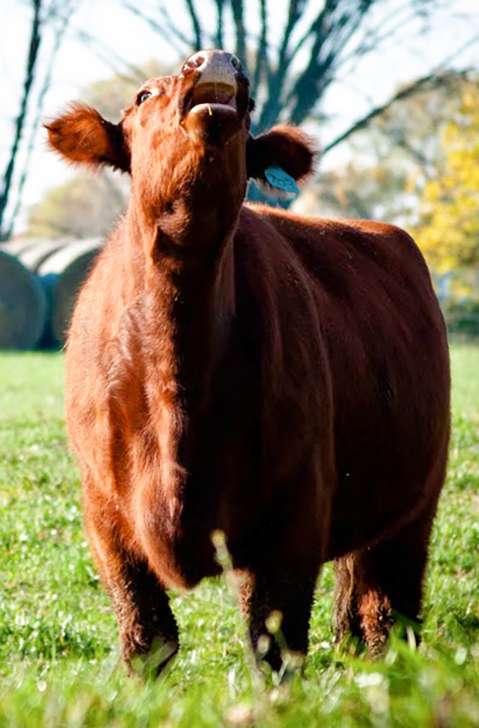
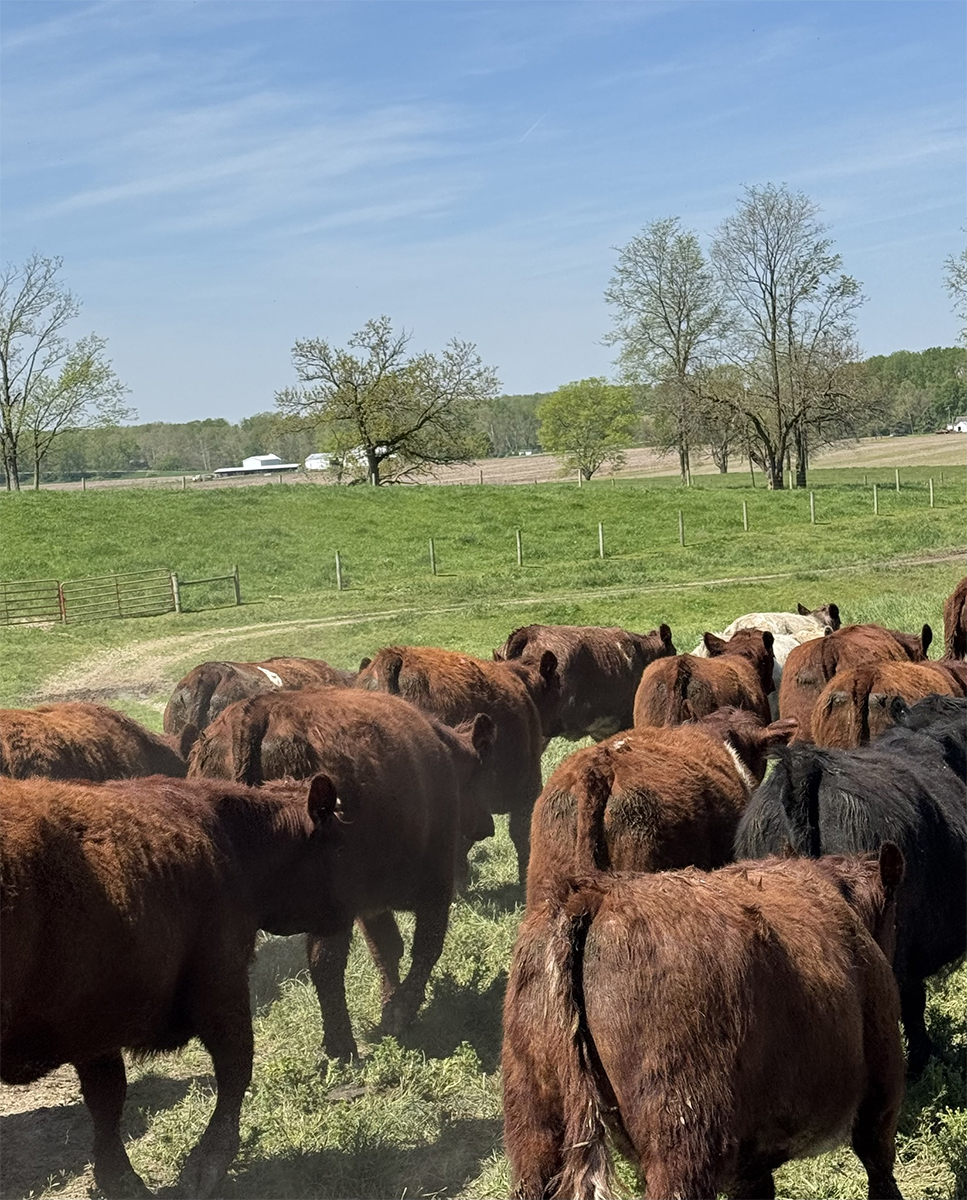
Whole Herd Genomic Testing
In 2015, BSG was invited to participate in a research initiative led by the American Shorthorn Association to help validate and refine the use of genomics in the breed’s national cattle evaluation. At the time, genomic testing was still in its early stages, but we believed then just as we do now that better tools make for better cattle. We began testing high-accuracy females, contributing to the very data set that built the foundation for the ASA’s current genomically-enhanced EPD model.
When genomic testing became commercially available a few years later, we didn’t wait around. We tested as many females as the budget would allow, purebreds and composites alike, because accuracy matters, and because there’s no substitute for real data.
By 2018, when we hosted our Form to Function female sale, every single live lot sold was genomically tested and marketed with GE-EPDs. To our knowledge, it was the first Shorthorn sale, nationally or internationally, to offer a fully genomically-tested offering. It may have even been the first of its kind in Indiana, across any breed.
And we didn’t stop there. In our most recent sale catalog, we dedicated multiple pages to educating breeders, junior and senior alike, on the why and how of genomic testing. That’s time and money we didn’t have to spend, but we believe it’s worth it. If we want the Shorthorn database to mean something—if we want our breed to advance—then more breeders need to take part. Whole-herd testing isn’t just something we do. It’s something we believe in.
ASA Genomic-Enhanced Heifer Project
When the American Shorthorn Association launched the Genomic-Enhanced Heifer Project, BSG didn’t wait to test the waters, we were already waist-deep. In fact, we were the first herd to participate. Phil and Linda had just started the process of testing their entire yearling heifer group when the ASA rolled out the program’s discounted fee structure. Without hesitation, they opted in. Not to save a buck, but to support a system that brings real value to the breed.
Since 2018, 100% of the BSG heifer crop; replacements, composites, and even the culls, has been genomically tested. No shortcuts. No cherry-picking. Full transparency across the board. We believe a complete genetic snapshot of the entire crop is the only way to truly understand what’s working and what’s not. Even those that don’t stay in the herd contribute to the data set and, ultimately, to the accuracy of the breed’s evaluation tools.
The Genomic-Enhanced Heifer Project is still active and available to all ASA members, and we strongly encourage more breeders, especially those with larger herds and louder voices, to take full advantage. It’s one of the most cost-effective and impactful programs we’ve got. If you’re raising females meant to advance the breed, there’s no reason not to test them. Because when more of us participate, the database gets stronger. And when the data gets stronger, we all get better.
More details on the program can be found in past issues of Shorthorn Country and on the ASA’s website.
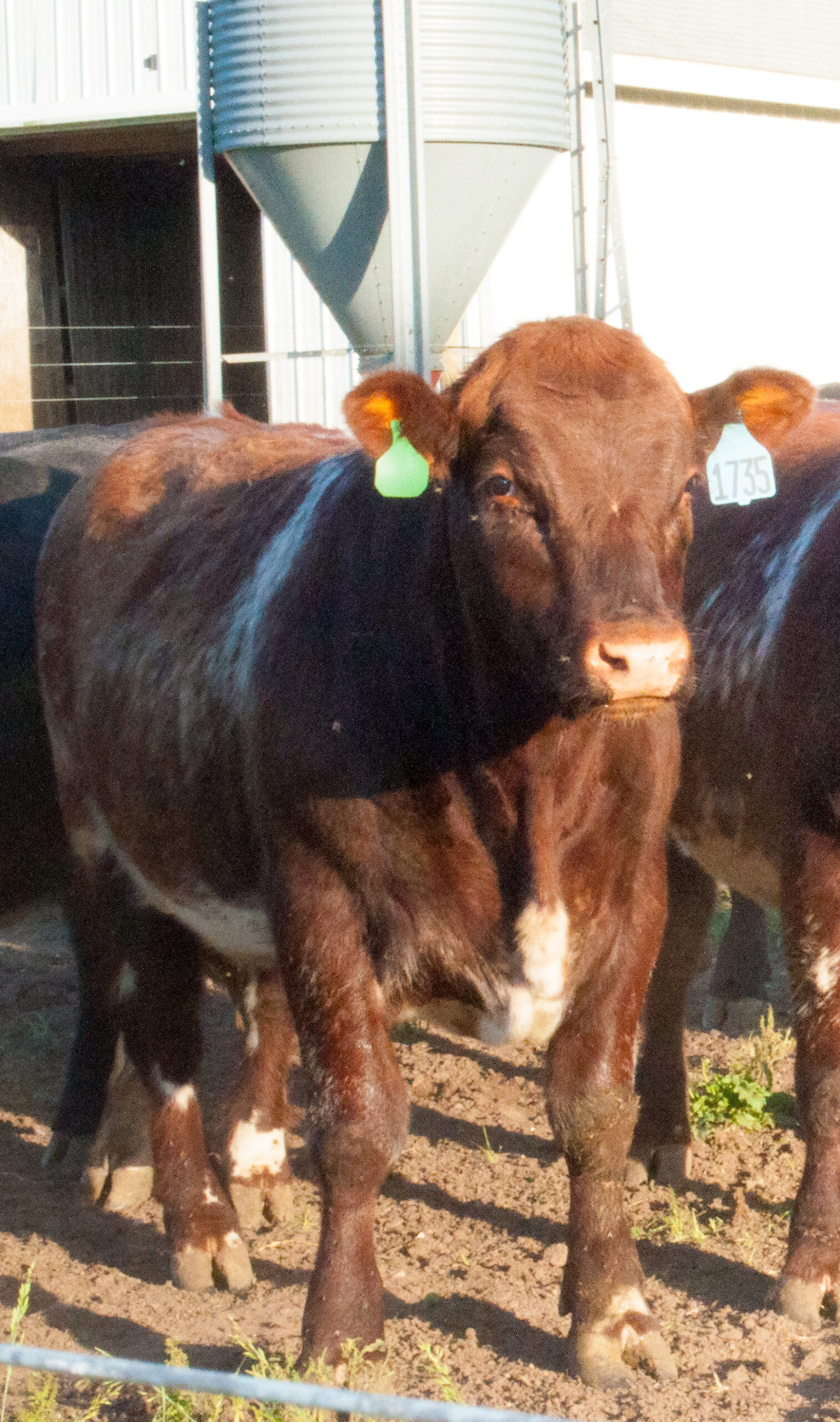
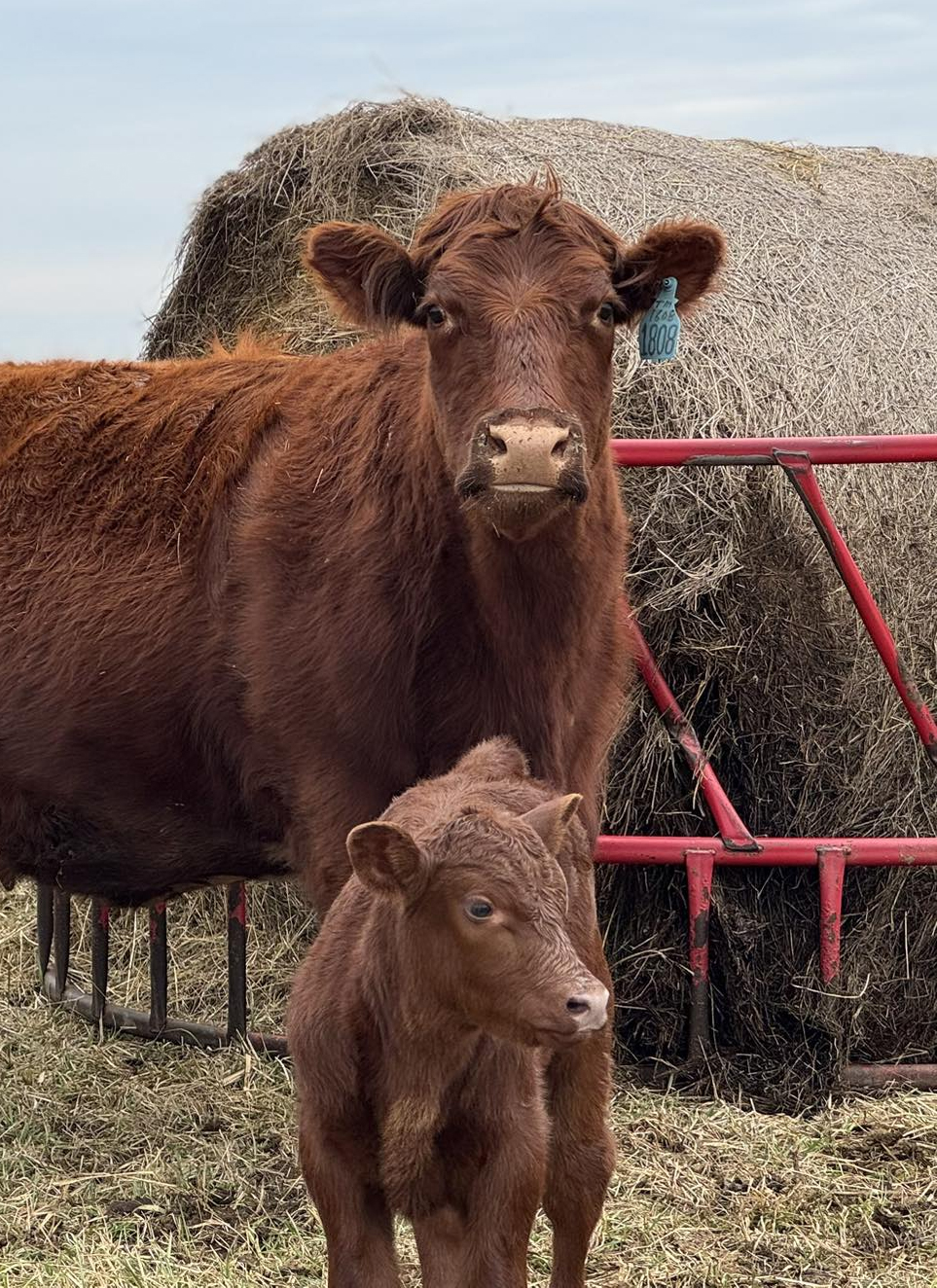
Whole Herd Reporting: Building Better Cattle Through Complete Data
For over two decades, Bowman Superior Genetics has been committed to Whole Herd Reporting (WHR) through the American Shorthorn Association. This commitment isn’t about following trends; it’s about leading with integrity. WHR ensures that every cow in the herd is accounted for annually, providing a complete and unbiased dataset essential for accurate genetic evaluations.
EPDs are only as reliable as the data behind them. By documenting the entire contemporary group, including culls and underperformers, BSG ensures that their EPDs reflect true genetic merit, not just selective reporting. This comprehensive approach is crucial for calculating traits like Stayability, which measures a cow’s ability to remain productive over time.
BSG’s dedication to WHR aligns with similar programs in other associations, such as the American Simmental Association’s Total Herd Enrollment (THE) and the Red Angus Association’s Total Herd Reporting (THR). These programs emphasize the value of complete data collection for enhancing genetic evaluations across breeds.
While some breeders may rely on pedigree estimates and selective data, BSG believes in transparency and full participation. By embracing WHR, they not only improve their herd but also contribute to the overall advancement of the Shorthorn breed. It’s a commitment to excellence that benefits everyone involved.
University of Missouri Hair Shedding Project
Behind-the-Scenes Work for Real-World Results
In 2016, BSG was approached by Dr. Jared Decker and graduate researcher Harly Durbin at the University of Missouri with a simple question: would we be willing to help identify the genetic markers responsible for hair shedding in beef cattle?
We didn’t hesitate. Phil and Linda saw immediate value in the research, particularly because of BSG’s location in the fescue belt where the ability to shed is more than a cosmetic trait; it’s a key driver of reproductive and economic efficiency. They enrolled every registered cow in the herd and began collecting blood DNA samples to support the university’s genomic analysis. From that point forward, each female was scored annually on a 1-to-5 scale for her hair shedding ability.
The goal? To build a database large enough and consistent enough to help scientists develop a genetic test that can identify cattle predisposed to shed early and efficiently. BSG is one of only two Shorthorn herds in the entire country contributing to this study and the only Shorthorn operation in the fescue belt actively involved.
Why does shedding matter so much? Because performance does. While the breed’s ability to grow hair is often praised in junior show circuits, too much hair in hot, humid fescue country leads to heat stress. Cows that don’t shed retain heat, which negatively affects conception rates, feed efficiency, and general well-being. It’s also a cleanliness issue; those cows tend to wallow, resulting in dirty udders and higher risk of calf scours and health problems.
For BSG, the shedding project isn’t just a science experiment, it’s a practical step toward making Shorthorns more commercially competitive in southern and southeastern markets. If we want more cow-calf producers in the Gulf Coast or Appalachian regions to consider Shorthorns as an alternative British breed alongside Angus, they need to know our cattle can shed. If they can trust that, we’ve opened the door for growth in markets where heat tolerance is critical, and where Shorthorns can shine with their built-in advantages in calving ease, marbling, and maternal strength.
While the ASA isn’t formally part of the study, BSG sees this as a long-game investment. We believe the behind-the-scenes work we’re doing today will pay off across the entire breed once IGS releases a commercially available Hair Shedding EPD in the coming years. Until then, we’ll keep collecting scores, keep submitting samples, and keep making progress one data point at a time.
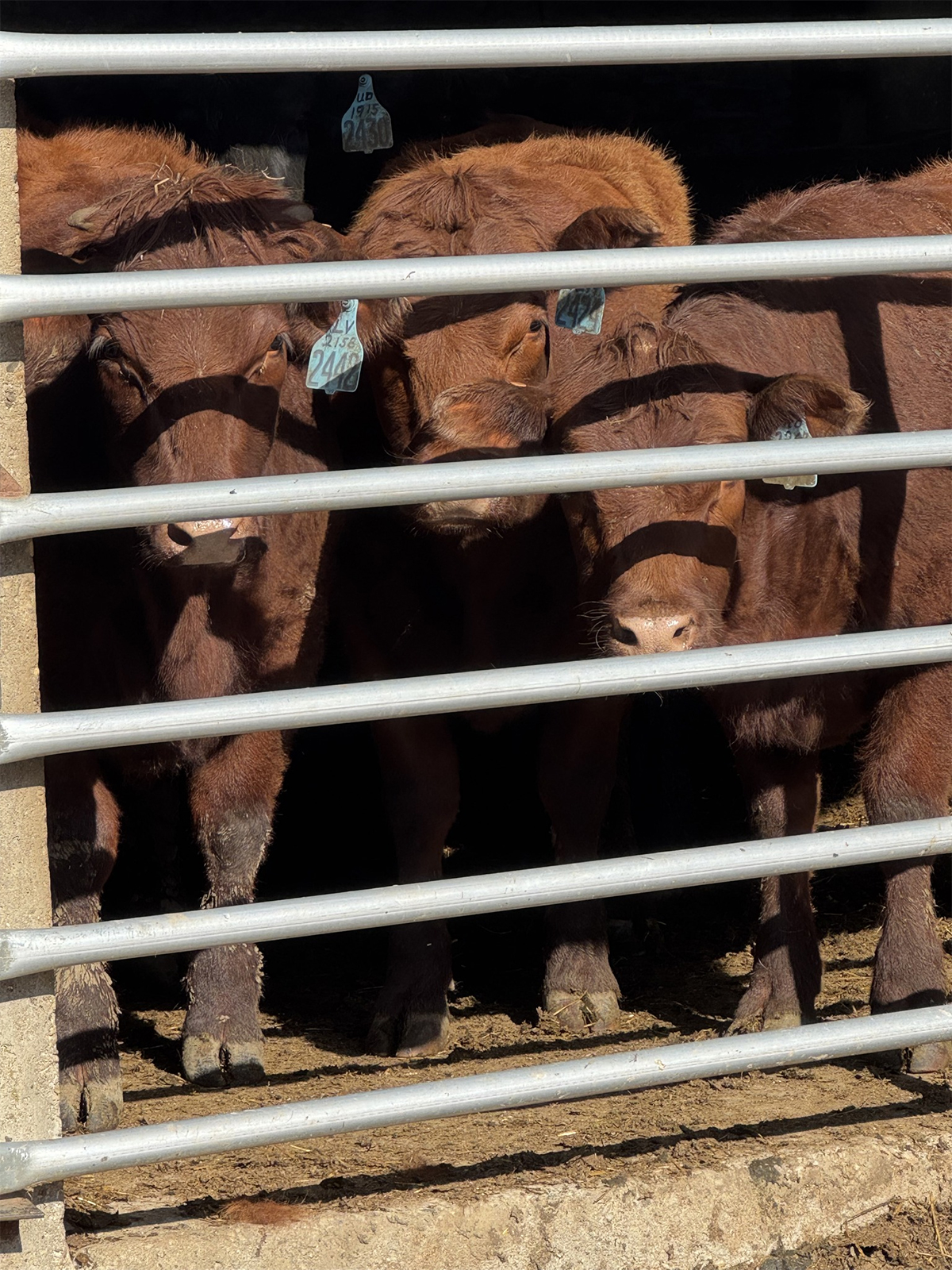
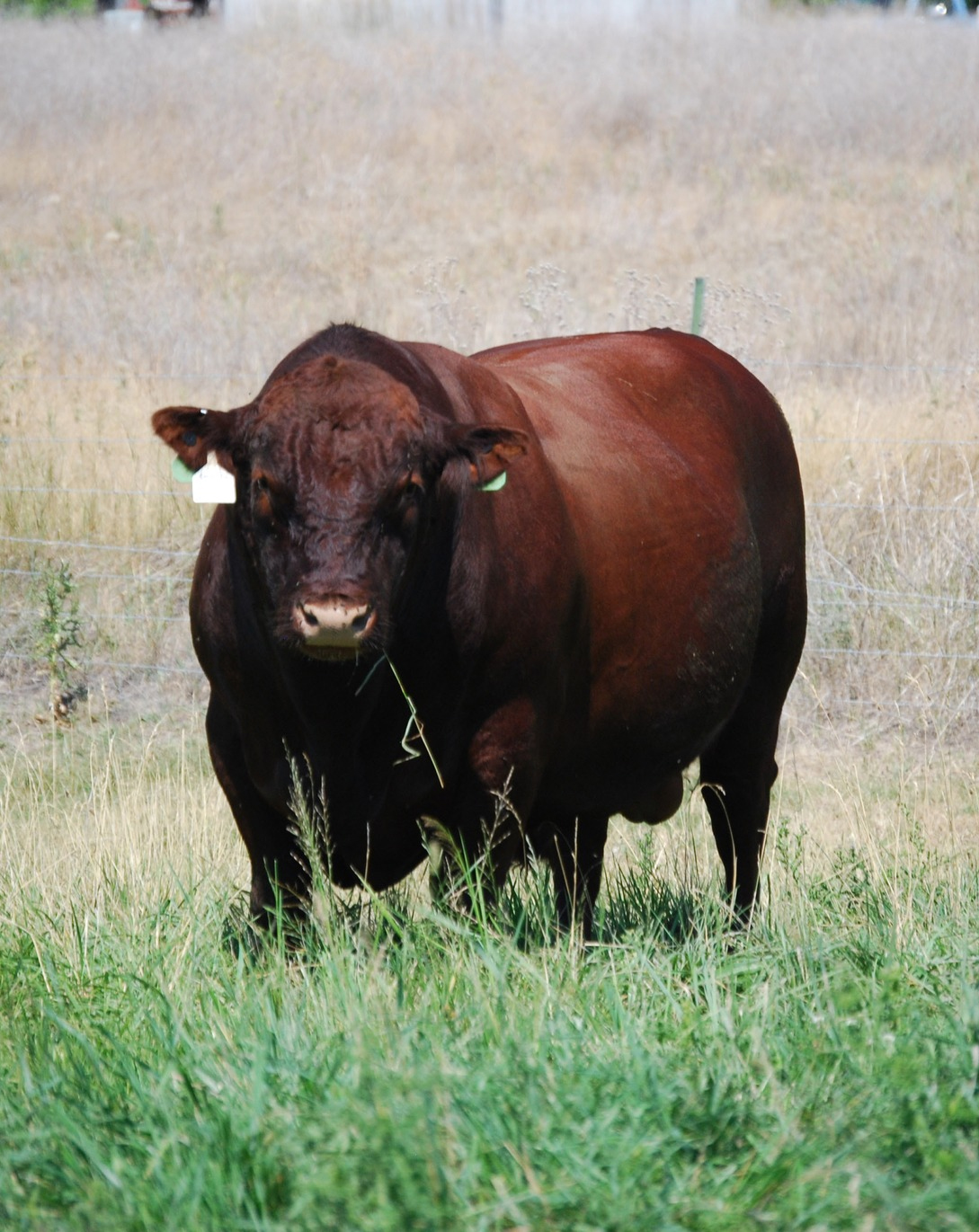
ASA National Sire Test:
Proving Performance Through Real-World Evaluation
Phil and Linda have long respected the American Shorthorn Association’s effort to create and maintain a National Sire Test. In an era where many breeds rely solely on USDA MARC (Meat Animal Research Center) data to define their place in the industry, the ASA’s decision to evaluate bulls in real-time, under commercial conditions, has been a major step forward.
This program gives the Shorthorn breed a distinct advantage: it allows sires actually being used in production scenarios to be evaluated across critical traits; carcass merit, feed efficiency, and more…and those results are incorporated into the IGS Multi-Breed Genetic Evaluation. This kind of hands-on, field-driven data brings clarity and credibility to our EPD system. It removes the guesswork. It keeps us honest.
While BSG missed the inaugural year due to our own internal sire testing schedule, we’ve proudly participated in the last two test cycles. We see this as essential work—not just for our herd, but for the entire breed. National genetic evaluations depend on structured, unbiased data from bulls that are being used, not just promoted. When those bulls are tracked through harvest and analyzed for actual performance, the evaluation becomes far more accurate—and far more useful to commercial cattlemen looking for predictability.
As long as there are bulls walking the pastures in Greens Fork, BSG will be submitting them to this program every time it’s available. Participation isn’t about showing off, it’s about showing up. We believe in doing our part to improve the data, sharpen the tools, and build a stronger future for the Shorthorn breed.
ASA Great State Feedout:
Putting Shorthorns to the Test for Better Beef
A few years back, the ASA launched a program with real-world implications called The Great State Feedout, and BSG didn’t hesitate to get on board. At the time, ASA staffer Jacob Alden invited breeders to send steers to the Tri-County Steer Carcass Futurity in southwest Iowa—a respected feedout system that tracks retained ownership cattle from weaning all the way to harvest.
For BSG, the opportunity was a no-brainer. We packed two trailers with as many Shorthorn feeder steers as we could and sent them west, year after year, to be part of a data-driven experience that would benefit both our program and the breed. The steers were fed out, harvested, and sold on a grid, meaning we received carcass data based on both yield and quality grade. In a world where carcass EPDs are some of the hardest to generate with accuracy, this kind of information is gold.
And the benefits went beyond data. In a market where Shorthorns have historically been undervalued at local sale barns, selling on the grid gave our steers—and our genetics—a fair shot. The results not only improved our own sire accuracy but also contributed directly to the ASA’s carcass database. It was a win for our herd, a win for the association, and a win for the credibility of the breed.
In fact, during our first year of participation, BSG topped the Shorthorn entries for highest-profit sire group…and didn’t stop there. Our pens ranked among the most profitable across the entire field, which included over 100 sire groups across six breeds. That kind of performance doesn’t happen by accident; it’s the result of intentional breeding, full-circle data collection, and a commitment to knowing, not guessing.
We believe programs like the Great State Feedout are exactly what the breed needs; structured, transparent, and focused on commercial relevance. When we test our cattle in real-world scenarios and let the numbers do the talking, we all get better.

